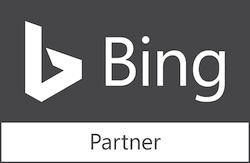Personal Promotion with SEO
Our friend Joe has a personal website (www.joemillman.com) and blog (http://blog.joemillman.com). Here’s our free advice to him and anyone with a personal website who wants to get high on Google — our tips for personal promotion with SEO.
1. Get a Google Webmaster Account
a. Verify your website(s) according to the instructions. Under settings, make www.joemillman.com the preferred domain for all your personal websites. This will make sure Google doesn’t treat http://joemillman.com and www.joemillman.com as different sites. You’re telling Google they’re the same site.
b. Check on who’s linking to you. In the world of personal promotion, a link is like a vote. A link from a industry-relevant, a trustworthy or a popular partner will be worth more than some guy blogging in his underwear.
c. The Google webmaster tool will also tell you if Google’s having trouble indexing your site.
d. With this same login info, Create a local business listing on Google Maps:
The terms you put in the site title and description should be your best search terms, as the search engines will pick up the terms in these fields when displaying local search results. In other words, use your search keywords IN your title and description.
How do you know the “best” keywords for personal promotion?
Good question, I’m glad you asked…
2. Understand the keyword terms that you want to go after.
When promoting personal and small websites, remember that when you’re starting out, people search on the services they’re after, not your brand or name.
This is the number one personal promotion tip, EVER…
Place yourself in front of people by understanding the terms that they use to describe your services, NOT the terms you think describe your services.
a. Where are you already doing well? Login to the webmaster tool above and go to “Top Search Queries” > More. The “Impressions” column will tell you what terms you rank in the top 30. “Queries” will tell you which terms people are clicking on.
b. What terms do you want to go after? Find your target keywords with this tool:
Because you shouldn’t be competing with the big boys in your industry, you should identify “long tail” keywords with search volumes less than 3,000 per month.
This is the best SEO strategy for personal websites. Go after low volume (but not too low) terms first with new content (explained next) and links (also explained below). Then, once you’ve ranked on some of the three and four keyword terms, go after ones with higher search volume.
3. Write your blog posts and pages to target those terms.
a. Use one target term in the post or page header and content.
b. Make a spreadsheet, which you can use as a tracking tool to remember which terms you target.
4. Add Google Analytics to both your site and blog. Analyze your stats monthly. Get to know your users and traffic.
Be sure to set up goals, to track the number of conversions.
5. Set up Yahoo Explorer for your personal website and blog
b. Check the inbound links from elsewhere on the web to your sites.
6. Submit your personal website and blog to Bing.
7. Get a Bing Webmaster Account and verify both your personal site and blog.
8. Submit your site and blog to the DMOZ.
Go to www.dmoz.org and find the right category and top right, click on “Suggest URL.”
Many websites and search engines get their info from this grandaddy of all directories.
9. Find other relevant directories to place your listing.
Start here: http://www.directorycritic.com
Pay only for links that have a Page Rank of 3 or better, and have high traffic volume (compared to others you find in your industry).
10. Get some link love.
Find other bloggers, trade publications, and related websites and ask them to link to you. Request that the link text be your target keywords (call me if you don’t understand this). Go after only sites with higher relative traffic and Page Rank using the tools above.
a. When requesting a link, offer to link to them in your blog or on your site. Keep a tracking sheet. Here’s a huge secret to optimizing links. If you can get the text of the link to be the term you’re going after. Great! If you can get that link to go deep into your site, directly to the page that is optimized for that term. Even better.
Here’s an example of a great link: Finding the right blog keyword. (The text is my target keyword and it links deep into the site to a page that targets that keyword).
b. Join forums or social sites in your niche and post thoughtful comments. Add links back to your sites.
That’s it for personal promotion with SEO. Go Joe and get high on Google!
If you want some help implementing some of these suggestions, contact us and ask about our personal promotion SEO services.







